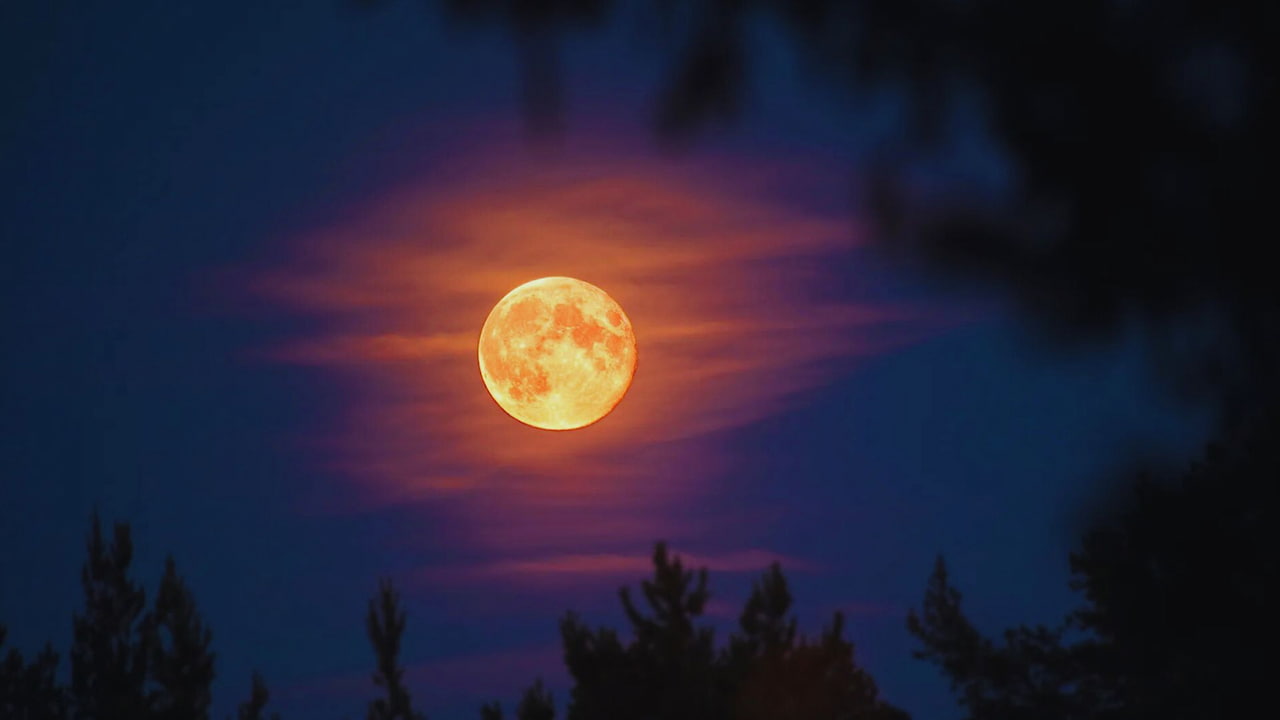Supermoon Spectacle: October’s Hunter’s Moon Dazzles Skywatchers
Tonight, stargazers are in for a treat as the biggest and brightest full moon of 2024 graces our night sky. This celestial event, known as the Super Hunter’s Moon, combines two fascinating lunar phenomena: a supermoon and the traditional Hunter’s Moon of October.
What Makes This Moon Super?
A supermoon occurs when the moon’s orbit brings it closest to Earth during its full phase. This proximity makes the moon appear larger and brighter than usual. October’s supermoon is special because it’s the closest one of the year, sitting just 222,055 miles away from Earth.
“The moon’s closeness really amps up its visual impact,” says Dr. Sarah Johnson, an astronomer at City University. “While the size difference might not be obvious to everyone, the increased brightness is hard to miss.”
The Hunter’s Moon: A Time-Honored Tradition
October’s full moon earned its “Hunter’s Moon” nickname centuries ago. Historically, hunters used this extra light to store food for the winter months. Native American tribes called it the “dying grass moon,” reflecting the changing seasons.
When and Where to Watch
The moon will reach peak fullness at 6:26 a.m. Eastern Time on Thursday, October 17. But don’t worry if you’re not an early bird—the moon will appear full to the naked eye for several nights around this date.
For the best viewing experience:
- Find a spot away from city lights.
- Let your eyes adjust to the darkness for about 20 minutes.
- Look to the eastern horizon as the sun sets.
More Than Just a Pretty Face: The Moon’s Impact
While the supermoon’s effect on Earth is subtle, it does influence our planet.
- Slightly higher tides (a few inches more than usual)
- There could be a rise in seismic activity, although there is disagreement over the evidence.
- Some animal behaviors that are tied to lunar cycles are disrupted.
A celestial show: rain or shine
Weather permitting, the Super Hunter’s Moon will be visible across much of the globe. Even in cloudy areas, the moon’s increased brightness might pierce through light cloud cover.
“It’s nature’s own light show,” says amateur astronomer Mark Chen. “And the best part? You don’t need any special equipment to enjoy it.”
Beyond the Moon: Other Sky Sights
While the supermoon steals the spotlight, keen-eyed observers can spot other celestial objects:
- Venus: The “Evening Star” shines brightly in the western sky after sunset.
- Saturn: Look for a steady, yellowish “star” in the southern sky.
- Jupiter is rising in the east as the evening progresses.
- Mars: For night owls, the Red Planet becomes visible around 11:30 p.m.
Comet Tsuchinshan-ATLAS: A Rare Visitor
Adding to October’s cosmic delights is Comet Tsuchinshan-ATLAS. This icy wanderer is making its first (and possibly only) pass through our solar system in 80,000 years.
Dr. Johnson explains that the bright moon may slightly hinder the comet’s visibility. “But it’s still worth trying to catch a glimpse of this once-in-a-lifetime visitor.”
Capturing the Moment
Many skywatchers will try to photograph the Super Hunter’s Moon. Here are some quick tips:
- Use a tripod for stability.
- Experiment with exposure settings
- Try to include foreground elements for scale and interest.
- Share your shots on social media with #SuperHuntersMoon.
Looking Ahead: More Lunar Treats
Can’t get enough of supermoons? You’re in luck. November will bring us one more supermoon to close out 2024. And looking further ahead, 2025 will treat us to a trio of supermoons in October, November, and December.
So whether you’re a seasoned astronomer or just enjoy gazing up at the night sky, don’t miss this chance to witness one of nature’s most awe-inspiring displays. The Super Hunter’s Moon is a reminder of the beauty and wonder that surrounds us, even in our own cosmic backyard.
Get outside, look up, and prepare to be amazed by the celestial show unfolding above.
Table of Contents
